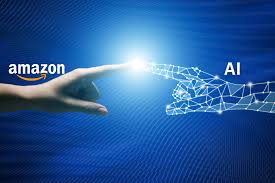Amazon is focusing on leveraging artificial intelligence to increase the speed of delivering stuff to consumers by minimizing the distance between its products and customers.
Stefano Perego, vice president of customer fulfilment and global ops services for North America and Europe at Amazon, briefed how Amazon is using AI in logistics.
Perego said, “One area is in transportation, such as mapping and planning routes, taking into account variables like the weather. Another area is when customers search for products on Amazon to help them find the right goods. I think one area that we consider key in order to lower cost to serve is on inventory placement.”
Perego added, “I’m pretty sure you’re familiar with the vast selection we offer to our customers. Imagine how complex is the problem of deciding where to place that unit of inventory and to place it in a way that we reduce the distance to fulfill to customers, and we increase the speed of delivery.”
Amazon has been focusing on regionalization efforts for shipping products to consumers from warehouses closest to them instead of from another part of the country. Doing so is a challenge and requires technology capable of analyzing data and patterns to predict what kind of products will be in demand and at which place. That is where AI comes into the picture. If a product is nearer to consumers, Amazon can make same-day or next-day deliveries, like the service the company offers to Prime subscribers.
Perego said, “The efforts are progressing well. In the United States, more than 74% of the products customers order are now from fulfilment centers within their region. Amazon is also using robotics in its fulfilment centers to help with repetitive tasks such as lifting heavy packages.”
Amazon said, “75% of Amazon customer orders are handled in part by robotics.”
Perego stated automation as collaborative robotics highlighting Amazon sees people and technology working together.
Perego said, “I think that what is happening is really a transformation of the type of jobs. When automation and AI become more widespread, they will change, rather than eliminate, the jobs that workers perform.”
He concluded, “Eventually, the type of job that an employee will be called to do in a fulfillment center will be increasingly a high judgment type of job. And the heavy lifting and repetitive tasks will be done through robotics. That’s fine. It’s a transformation rather than a substitution.”





